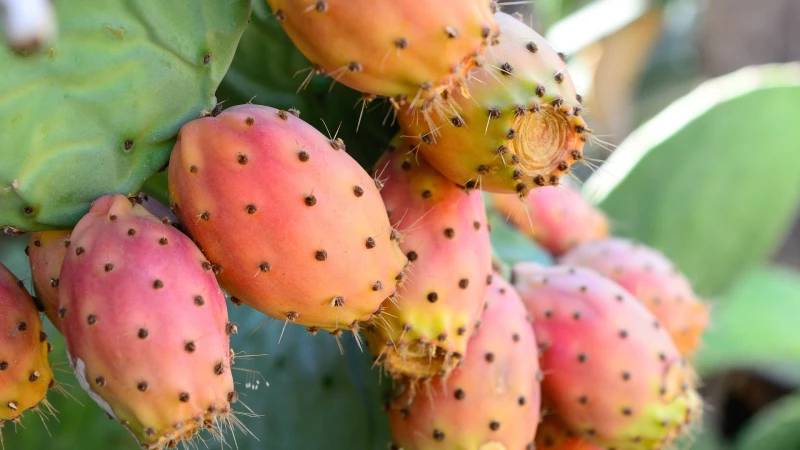A Special Fruit in Cyprus or How to Clean a Cactus and Why to Eat it?
Yes, you understood correctly. Here in Cyprus, they eat cactus, or rather, the fruits of the cactus. This strange fruit is called prickly pear, or babutsa, and it ripens once a year.
The cactus is not only a convenient living fence but also great for consumption. Prickly pear tastes like a cucumber with a tang and is refreshing in the heat.
It is necessary to peel this delicacy while wearing gloves, otherwise, the small needles will prick your hands. Local residents often burn the fruits with a gas burner to get rid of the sharp needles.
How is prickly pear used?


As food, prickly pear can be used to make salads, jellies, omelets, candies, preserves, and juice, and on Malta, they even make liqueur from the fruits.
In medicine, prickly pear oil is used in several preparations due to its properties. Cactus fruits contain vitamin C, carotene, rutin, flavonoids, fiber, fats, magnesium, potassium, calcium, zinc, and iron. And in the flowers from which the fruits ripen, amino acids, antioxidants, nicotinic acid, rutin, and minerals such as zinc, calcium, selenium, sodium, and magnesium have been found.
In cosmetology, prickly pear is used to make oils and creams with anti-aging effects.
Frequently asked questions about prickly pear in Cyprus
When does prickly pear ripen?
Prickly pear flowers appear in Northern Cyprus as early as April, but they ripen closer to the end of August or the beginning of September. Before the harvesting season, festivals related to the cactus are held in different municipalities of Northern Cyprus.
How to peel prickly pear?
It is necessary to peel this delicacy while wearing gloves, otherwise, the small needles will prick your hands. Be careful: the flowers are also protected by small needles that can harm you. Do not touch the flowers with bare hands! First, remove the top layer, and then the inner layer. For a demonstration, you can watch this video.
Subscribe to our Telegram channel and learn many new things about Northern Cyprus! For example, here they eat not only cactus but also carob trees!

